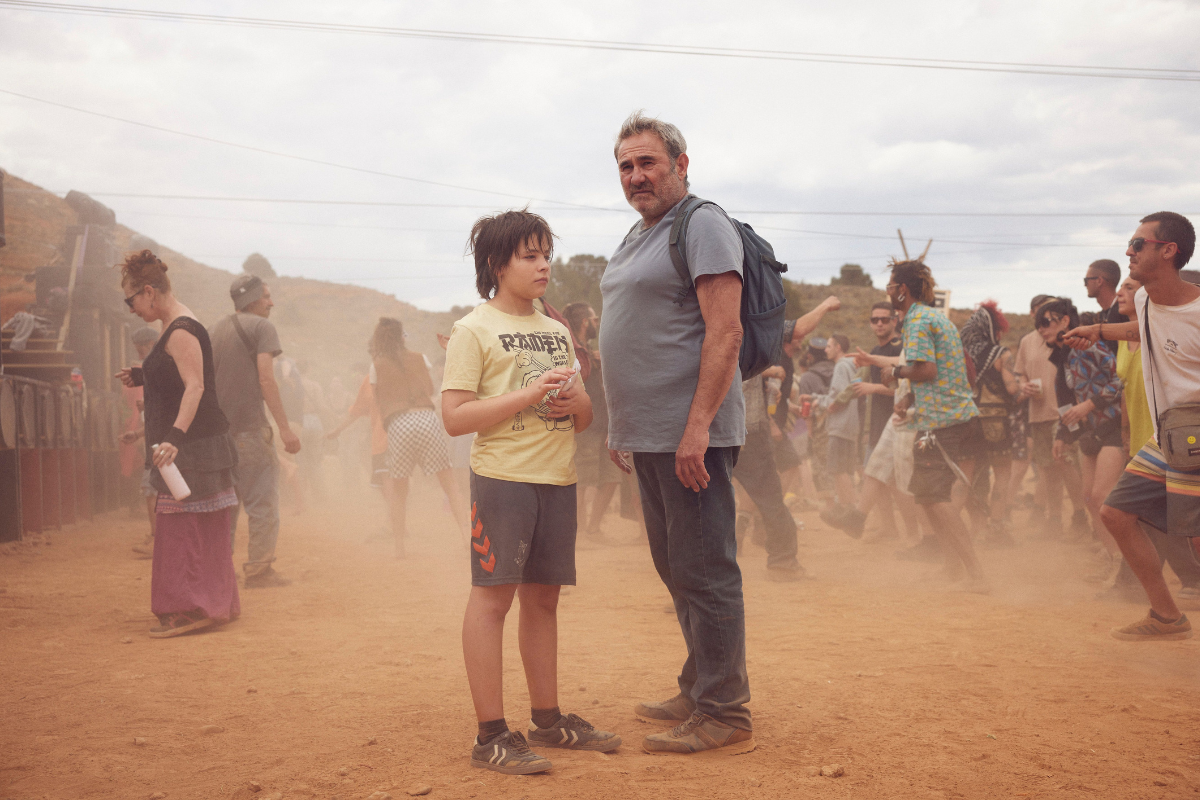‘Homebound’ Review
A journey of friendship, identity, and a nation that keeps failing its own
There are films that entertain, films that provoke, and then films that quietly rearrange something inside you. Homebound belongs to the last category, a work that holds a mirror to everything many of us see, hear, read, and fear about life in India, yet continue to dismiss as exaggerated or irrelevant or something that should not belong in the present age. Even the frantic attempts to censor this film say more than any critical essay ever could. Those attempts speak to a country desperately trying to preserve a narrative that insists everything is fine, everyone is equal, and nothing ugly exists beneath the surface. Neeraj Ghaywan’s return to the big screen refuses that comfort.
Homebound tells the story of Chandan Kumar Valmiki and Mohammed Shoaib Ali, two childhood friends from a small North Indian village who believe that a police uniform might finally give them the dignity denied to them at every turn. Their dream is simple. Earn respect. Secure livelihoods. Protect the ones they love. Yet the world around them refuses to make space for something this human. Much like Ghaywan’s critically acclaimed Masaan, this film is rooted in modern India’s daily contradictions. But here the canvas is wider, the pain is sharper, and the political urgency is impossible to ignore.
Placing the film almost nine years after his debut, Ghaywan commits to a story that digs into the many layers of identity that shape life in India. The narrative explores caste, religion, bureaucracy, hope, despair, and the quiet cruelty of a country that prides itself on meritocracy while simultaneously protecting the structures that crush its most vulnerable. This is India’s official entry to the 98th Academy Awards, and it is not difficult to see why. Beneath its simplicity lies a story with devastating depth.
The first half of Homebound is a portrait of ambition held together by a fragile belief in fairness. Chandan invests in education and dreams of a better home for his family. Shoaib accepts a peon job and shoulders his father’s medical expenses. Both men choose different paths, yet everything they do moves toward the same destination. They hope that a uniform will allow them to stand tall among people who take issue with their very names.
The film follows their days with a gentle sensitivity. Scenes of college classes, office corridors, cramped homes, and crowded railway stations contain small observations about how identity reveals itself in everyday interactions. A moment as simple as Chandan hesitating before stating his full name tells you everything you need to know. The girl he meets at the station, Sudha, notices this hesitation instantly. No forced questions. No dramatic reveal. Their exchange carries the soft quiet acknowledgement of two people shaped by similar realities, even if their circumstances differ.
What makes the first half compelling is Ghaywan’s commitment to nuance. The use of music is minimal. The score allows characters to inhabit their surroundings instead of dictating what the audience should feel. The performances reinforce this restraint, especially Ishaan Khatter and Vishal Jethwa, who bring raw sincerity to their roles. For perhaps the first time, Janhvi Kapoor feels genuinely present on screen, although her character remains underwritten. Her track could have offered a richer perspective on the world the film attempts to dissect, but she remains more of a narrative device than a fully lived person.
Still, the film includes one moment that stands among its best. Chandan’s sister confronts him with a hard truth about privilege within their own family setting. The conversation is brief but explosive in the way only real-life conversations can be. It is an essential reminder that identity never sits on a single axis and that struggles often coexist with blind spots.
Where Homebound falters is in its pacing. The film compresses months worth of emotional change into quick transitions. Exams, results, frustrations, disappointments, and temporary work chapters fly past in rapid succession. The audience is not given the time to sit with these characters, to feel the weight of the grind they endure. The third act suffers the most from this breathless pace. It is not difficult to imagine how much richer the film could have been had it allowed more space for reflection. Yet considering it is based on real events, the filmmakers likely faced the challenge of condensing numerous harsh experiences that marginalized communities face every day.
Things shift drastically in the second half when the pandemic arrives. The story then becomes part road film, part survival tale. Chandan and Shoaib, like millions of migrant workers across India, decide to walk hundreds of kilometers back home. This narrative turn has already been documented endlessly in news reports, yet Homebound still finds humanity in the portrayal. The film refuses spectacle. Instead it highlights small echoes from earlier scenes. A piggyback ride once filled with joy becomes an act of desperation. A sip of water that once felt casual becomes life sustaining. The film uses these mirrored images to remind us that crisis does not begin with an event like a lockdown. The crisis was already there in the slow violence of injustice that both men had been living through long before the world stopped.
This portion of the film is both powerful and uneven. On one hand it serves as a reminder that the struggles of Chandan and Shoaib were never isolated. Their story is the story of millions. The tragedy is not unique in the way cinema often likes its tragedies to be. On the other hand, the segment can feel emotionally distant because it covers ground already familiar to anyone who followed the news of that period. While it may seem stretched, the choice to include it at this length clearly serves audiences outside India who may not fully grasp the scale of what happened.
The visuals during this journey contain some of the film’s most haunting moments. Pratik Shah’s compositions capture the bitter sunlight, the dusty roads, the raw exhaustion of bodies stretched beyond their limits. The contrast in lighting between Chandan’s home and Shoaib’s home during the exam results scene is a quiet masterstroke. The white dove near the end feels like a familiar symbol, yet it still lands because of the recurring images that build up to it. Repetition becomes memory, and memory becomes grief.
One of the strongest thematic threads in the film concerns names. Throughout the story, characters are judged, questioned, harassed, or dismissed based solely on what their names reveal about them. Yet during the journey home, this obsession dissolves. In one moving moment, Chandan takes on Shoaib’s father’s name to survive, free from hesitation. What once defined them no longer matters when survival becomes the only goal. The film does not romanticize this transformation. It reminds us that equality appears only in conditions where everyone is equally abandoned.
Homebound ultimately works because it refuses to offer redemption or false hope. It acknowledges that progress in India often disguises inequality. It highlights how every achievement can collapse under a system that demands resilience from the people it continues to fail. The film is sometimes polished in a way that makes the pain feel distant, but that distance also indicts the audience. We are forced to confront our own privilege in watching suffering as narrative clarity.
In the end, Homebound is devastating yet tender. It understands friendship, ambition, humiliation, and the quiet strength that people cling to when the world around them is indifferent to their existence. Even with its imperfections, it is one of the most honest works of recent Hindi cinema. Neeraj Ghaywan delivers a story that refuses to comfort. It confronts. It mourns. It remembers. It insists that dignity is not a reward but a basic right.
And in a year filled with noise, Homebound arrives as a necessary document of our times. A film everyone should see.
Homebound is now streaming on Netflix.






